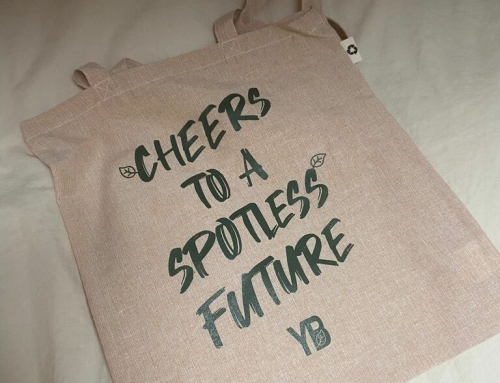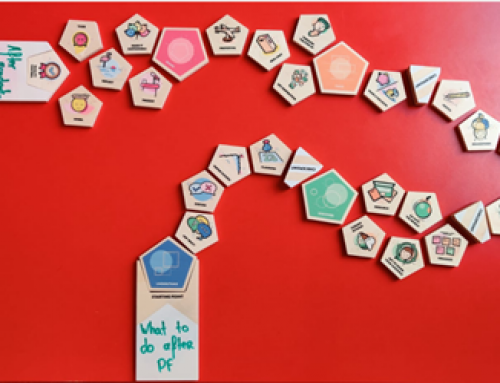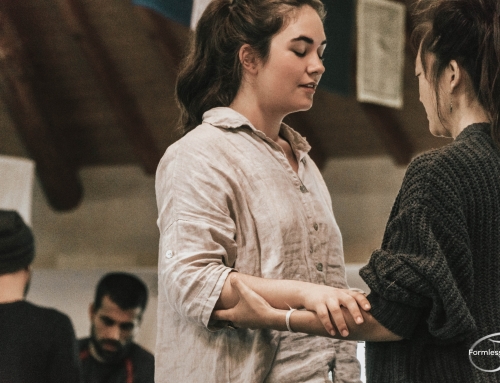The main theme of my previous blog was that to truly change systems, we should shift the relational conditions that hold a problem in its place, and improve the quality of our interactions: “Cultivate the soil of the social field” as how systems scientist Otto Scharmer, calls it (2016). Many of the systemic problems we face today are symptoms of “conditions of separation” in the narratives of our interactions. To improve the quality of the social field, we can make a shift from relational conditions of “separation” to conditions of “interbeing.”
As a social innovator and facilitator, I asked myself what this notion could mean to me in my own practice. How might I facilitate a shift from relational conditions of “separation” into conditions of “interbeing?” As a first step in making this notion more tangible, I decided to break down this rather abstract terminology of relational narratives by giving more concrete meaning to it.
I believe that regarding complex issues, when people are prejudiced, stuck in their own opinion, not open for dialogue, or when people are in conflict, it inhibits making effective progression around those complex issues. I see these as polarizing conditions (of separation) that are rather stagnating.
To gain a more concrete understanding as to how it is possible to move from conflict (separation) to progression (interbeing) through conversation, I decided to interview professionals from different domains, who have experience in facilitating dialogue and conflict
During the interviews, I gained insight into relevant themes that reoccurred in different professional’s stories. For example: focusing on commonalities, exploring “the undercurrent,” and vulnerability leads to trust. I also gained insights into different possible interventions toward conflict resolution.
Focusing on commonalities
According to intermediary Schol, focusing on commonalities is a very effective way to deal with a situation of conflict. No matter how polarized people may seem, there is always a basic set of values and interests that both agree on. The key as a facilitator is to help the group see where they can “find each other” by locating commonalities between people, which are always somewhere. Intermediary Schol shares that you can build on this foundation to reduce conflict. The point is to see whether you can slowly but surely progress from this agreement about a basic goal, and continuously refer back to it. When all the parties agree on this common ground, half of the problem has been solved. (Schol. H, personal communication, March 19, 2021).
Working from commonalities helps to get people into the same direction. Although there are always different interests and beliefs on the background (nobody thinks exactly the same), when you work from a common interest, it is always possible to shift those other interests, and it enables people to take each other into account. (Truyen. E, personal communication, March 18, 2021).
Exploring the undercurrent
Communication coach and ACT-therapist Truyen says that besides focusing on commonalities, it is also important to give space to the undercurrent (“onderstroom” in Dutch), which is about people’s feelings and beliefs. Tension in a conflict is visible in the upstream (“bovenstroom” in Dutch). For example, certain people do not communicate with each other, however, the reason why they do not communicate lies in the undercurrent. For individual reasons, things are not being said or shared and from this, assumptions originate that lead to stagnation in communication.
When facilitating a conflict (of interests), a first step is to look at why people have a certain preference. You explore the undercurrent, their beliefs. You should not mention discrepancies, but rather listen without judgment. When a safe space is created for the undercurrent, and people are allowed to share and feel that they are heard, then frustrations can be turned into a positive conflict. The tension will decrease and there is more space for openness, honesty, and circumstances in which people would want to work together and come to solutions: because at least, everyone is already listening to each other.
When people feel heard, trust is built, and to collaborate and come to solutions, trust is the fundament. If you as a facilitator give the impression that you are non-judgmental and you listen, you create a space in which things can be shared. When people have shared things, they are able to take each other into account. Sometimes people do not listen to each other because nothing is being shared, because this space is not provided. (Truyen. E, personal communication, March 18, 2021).
Vulnerability leads to trust
Vulnerability and trust are some essential elements in (dealing with) situations of conflict. According to sociotherapist Schellekens, vulnerability enables people to connect. Your own experience as a facilitator is central in this process too. If you acknowledge and share your own vulnerability as a facilitator yourself, it invites others to do the same.
Similarly, Schol shares that if people see from each other that they dare to be vulnerable, it contributes to trust. Trusting someone is the core of relationships, and when people have relationships, they automatically gain deeper insights into another person’s stories. Vulnerability does not mean that you allow others to blow you away, but that you open yourself up and allow the other into your world.
Other interventions to deal with conflict
Besides finding commonalities between people, exploring the “undercurrent,” and creating space in which people can be vulnerable, there are also other possible interventions to progress through conflict.
Behavioral scientist Rietjens works with pedagogues in a residential group. She says that when there is confict, in any case, stay out of the escalation patterns so that someone’s emotion subsides. The situation can be returned to at a later time, to start the conversation: “Strike the iron when it is cold.”
In situations of conflict, Rietjens and her colleagues outline the framework of the conversation in advance. This framework is set with what behavior is expected of whom is involved in the conflict. In the conversation, the steer toward those expectations:
People are asked whether they understand what is expected from them, and what would help them to meet those expectations. People are stimulated to think for themselves and take responsibility for their own actions. (Rietjens. K, personal communication, 18 March, 2021).
Another method is to first speak to different parties to understand their “fundament” or “basic set of values and interests.” The key is to then find out where different parties have things in common. By first speaking to each party separately, you create a safe space in which they can talk about their position. To continue, it is then possible to share with their “opponents” what you think they have in common, and ask if they recognize that as well. This approach could create new opportunities for opposing or conflicting parties to engage into dialogue, around shared values.
Schol says that, in the end, a good conversation has a number of basic conditions that can be summarized under the heading: “If you yourself are open and listen carefully, and show that, then you often have a good conversation.” All other techniques are derived from that.” (personal communication, 18 March, 2021).
One more important insight that I gained during the interviews is that conflict is not necessarily a difference in opinion. According to Truyen, often a conflict is not about the fact that people differ in opinion, but how the difference in opinion is being dealt with. “We disagree” is not the conflict. The conflict originates from: “How do we deal with the fact that we differ from opinion?” (personal communication, 18 March, 2021).
“Sometimes, when people are not quickly understood about what they want, they can “jump into a kind of acceleration or emotion.” That does not mean that they are angry. This means that the communication does not work. They are frustrated because they cannot express themselves, or experience a reaction that makes them feel that they are heard and recognized.” (Schol. H, personal communication, 18 March).
I believe that through the interviews, I made a valuable first step in translating the abstract notion of relational narratives into my practice, by exploring more concrete meaning of how to move from conflict to progression in conversations.
During the interviews, I also became more aware of my own limitations. I consider myself a natural listener and being able to suspend my judgment fairly well. However, what could I do when I am facilitating parties that refuse, or at first are unable to listen and suspend their judgment naturally, because of a given situation?
Furthermore, personally, I tend to avoid confrontation, however, as a facilitator, I might encounter situations that can be confronting either to me, or between the involved parties, especially when people are in conflict around matters close to their hearts. How do I then deal with these situations to create more favorable conditions for collaboration? These are two examples of what I believe are also valuable elements to take into account in my professional development. As a next step, I intend to further explore, give meaning to, and refine these initial findings.
References:
Truyen, E. (2021, March 18). Personal communication (Interview].
Schol, H. (2021, March 19). Personal communication (Interview].
Rietjens, K. (2021, March 18). Personal communication (Interview].





